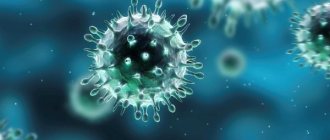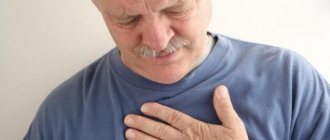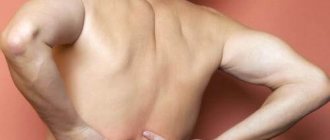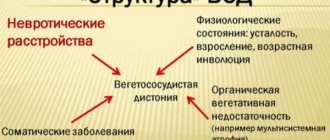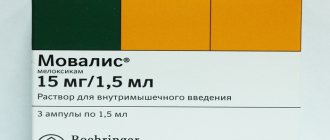Features of the pathology
Pain in the heart area in people 30-40 years old without an obvious tendency to malfunction of the cardiovascular system most often turns out to be intercostal neuralgia. The disease is not regarded by doctors as an independent illness. It usually develops against the background of a number of other disorders. The clinical picture, characteristic of heart pathologies, occurs as a result of irritation or compression of nerve endings in the spaces between the ribs. The patient experiences acute pain at the site of the lesion, which often radiates to neighboring areas. Considering the difference in approaches to the treatment of cardialgia and intercostal neuralgia in the heart area, it is important to consult a doctor in time with a similar problem.
Causes and symptoms
In most cases, intercostal neuralgia is the result of hypothermia and prolonged exposure to a draft. The risks increase as the muscle tone of the chest frame decreases. This is typical for people who neglect proper nutrition and physical activity.
The list of the most common causes of intercostal neuralgia also includes:
- decreased functionality of the chest due to deformation of the spinal column against the background of osteochondrosis and similar pathologies;
- multiple sclerosis, neuritis and other disorders in the central nervous system;
- infectious diseases, including influenza, tuberculosis, ARVI, herpes;
- a tumor formed in one of the areas of the spinal column or in the area of passage of the nerve ending;
- intoxication due to alcohol or drug poisoning, long-term use of medications;
- injuries of the spine, chest, back;
- deficiency of B vitamins;
- old age, leading to changes in the structure of the spine;
- menopause in women;
- regular excessive strain on the back muscles or complete lack of load on them;
- chronic stress, physical exhaustion;
- discomfort during sleep, wearing too tight underwear by women;
- various forms of metabolic disorders leading to obesity, diabetes, salt deposition in the spine.
The cause of the disease may be a tumor on the spinal column.
Depending on the cause of intercostal neuralgia, the pain syndrome is supplemented by a number of symptoms characteristic of a particular condition. This allows you to identify the source of the problem and act on it, rather than just deal with uncomfortable sensations.
Differential diagnosis
If you experience pain in the heart area, it is better to immediately ask your doctor what the problem might be and what to do about it. Symptoms similar to intercostal neuralgia occur with myocardial infarction, angina pectoris, pleurisy, cholecystitis and a number of other pathologies. An important role is played by the individual characteristics of the patient, which can seriously change the nature of the course of illnesses.
The clinical picture of intercostal neuralgia is characterized by the following symptoms:
- sharp intense pain on the left in the back and lower back;
- discomfort in the spine area, reducing the overall functionality of the body;
- increased symptoms on the affected side when coughing, sneezing, physical activity, deep breathing;
- relief in a comfortable, stationary position;
- a burning sensation in the muscles, their spasm, tension, tingling sensation;
- discomfort and pain when trying to palpate the affected area between the ribs;
- decreased sensitivity and numbness of the skin in the affected area;
- Sometimes there are changes in blood pressure;
- increased sweating, redness or paleness of the skin in the problem area.
The disease is characterized by a burning sensation in the muscles.
To distinguish intercostal neuralgia from various types of heart disorders, you need to pay attention to a number of characteristic points. In case of heart problems, the pain sensations are stable, their intensity does not change depending on the degree of activity or changes in body position. If thoracalgia is characterized by a long course and persistence, then cardialgia is usually short-lived and occurs against the background of strong experiences.
Another important point is that heart pain most often radiates to the left arm, while neurological pain radiates to the shoulder blades, lower back, and under the collarbone.
To clarify the diagnosis for pain in the heart area, doctors recommend taking a nitroglycerin tablet. For heart problems, this will bring significant relief or completely relieve the symptom. In the case of intercostal neuralgia, the symptoms will weaken under the influence of analgesics and thermal procedures.
Symptoms and diagnostic features
External signs of thoracalgia on the left side:
- sharp pain on the left and in the lumbar region;
- discomfort in the spine area;
- increased pain during physical activity, sneezing and coughing;
- reduction of discomfort in a fixed position;
- muscle tension and spasms;
- tingling and burning sensation;
- discomfort when palpating the space between the ribs and vertebrae;
- numbness and decreased sensitivity of the skin on the left;
- dizziness, fainting;
- sudden changes in blood pressure;
- redness or paleness of the skin in the area of pain;
- increased sweating;
- difficulty breathing deeply.
Manifestations of intercostal neuralgia are often similar to symptoms of other ailments. Thoracalgia can be confused with angina pectoris, myocardial infarction, cholecystitis, pleurisy and other disorders of the heart and internal organs.
| Symptoms of thoracalgia | Symptoms of heart disorders |
| Pain increases when changing position, coughing, sneezing or taking a deep breath | The pain is throbbing and does not get worse during mobility. They may be accompanied by an irregular pulse, an increase or decrease in blood pressure |
| The pain is persistent and long-lasting | Pain syndrome occurs after strong emotions, anxiety, fatigue and is short-term |
| Painkillers and heat help relieve pain | Nitroglycerin helps eliminate malaise |
Methods used to identify left-sided thoracalgia:
- An examination by a specialist is the initial stage of diagnosis if neuralgia is suspected. If necessary, the doctor may order laboratory tests.
- Ultrasound examination - used to determine the condition of the internal organs and soft tissues of the spinal column.
- Radiography is a technique that provides information about the structure of bones and allows one to identify the presence of traumatic changes, bone displacement, osteophytes and other deformations.
- Computed tomography is a more informative way to obtain information about the structure of the nerve roots and spinal cord of the spine.
- Magnetic resonance imaging is a safe and highly informative method that provides information about changes in nerve, connective and muscle tissues, and intervertebral discs.
Types of diseases
The patient's condition is significantly influenced by the form of intercostal neuralgia. The methods of treating the disease also depend on it. The nature of the pathology is acute and chronic. The first is characterized by rapid progression, the second is characterized by a protracted course. Based on external manifestations, the disease is divided into unilateral and bilateral. Depending on the cause of development, radicular and reflex intercostal neuralgia are distinguished. The first becomes a consequence of pinching of the nerve roots emerging from the spine. The other occurs against the background of muscle spasms in the intercostal spaces.
The acute phase of the disease is characterized by compression of the nerve roots.
Signs in children
Intercostal neuralgia also develops in childhood, especially when the baby is carried incorrectly in one's arms. However, until the age of 3, a child cannot correctly identify symptoms. Parents can recognize them:
- the child complains of pain in the abdomen, sternum, or from the side of the shoulder blades;
- possible stuttering and crying;
- sleep is disturbed;
- sweating increases.
It should be remembered that with intercostal neuralgia, the pain is especially severe during movement, and quickly subsides at rest.
Diagnostics
To determine the source of pain, doctors interview and examine the patient. Then, based on the identified clinical picture, laboratory and instrumental examinations are prescribed. Usually carried out:
- A general blood and urine test, as well as blood biochemistry, which will help to immediately detect disorders in the body and provide detailed information about the functioning of the heart.
- An ECG (electrocardiography) is prescribed for suspected coronary heart disease and heart attack. At rest, an ischemia study may not reveal abnormalities; it will be necessary to conduct an ECG simultaneously with exercise.
- Coronary angiography is a study using a contrast agent that determines the patency of blood vessels. By its distribution, you can find the location and degree of pathological narrowing of the blood vessels of the main artery of the heart. If problems are detected, immediate surgical intervention is usually required.
- Echocardiography is an ultrasound examination that is performed if heart pathology is suspected. Using an ultrasound, you can see how the heart valve is working. Thanks to this method, heart defects and inflammatory processes are detected.
- Tomography of the spine is prescribed if pain in the chest may be associated with diseases of the spine. It is also carried out if there is a suspicion of a hernia in the spinal region or tumors of the soft tissues and spine. Determination of antibodies to herpes viruses - if postherpetic neuralgia is suspected.
Important! You cannot treat yourself or take medications without the knowledge of your doctor. Instead, it is better to take preventive actions in the form of eating healthy foods and doing exercise.
Is it possible to distinguish heart pain from neuralgia?
There are many ways to distinguish pain located on the left side from a heart attack.
| Neuralgia | Cardiovascular disorders |
| If symptoms occur on the left, the pain will intensify when inhaling and exhaling, as well as when trying to change position. It hurts very much if they start to feel the ribs. | With heart damage, symptoms persist constantly: in a standing or lying position. |
| Painful sensations surround the upper part of the body: shoulders, chest, area of the ribs, shoulder blades. The pain persists for a long time. | Heart pain radiates to the left arm and persists in the sternum, in the center. The unpleasant sensations last no longer than 15-16 minutes. |
| Sedatives, painkillers, and NSAIDs help. | The pain goes away with nitroglycerin. |
| The pulse remains normal, the pressure rarely changes. | The pulse may quicken or weaken, and the blood pressure may rise or fall sharply, depending on concomitant heart disease. |
But we cannot ignore the characteristics of individual patients. Some heart diseases are accompanied by increased pain on the left side when moving or inhaling. To accurately determine the disease causing unpleasant symptoms, you need to consult a doctor.
If the symptoms extend to the ribs or lower back, it is necessary to separate disorders in the digestive and urinary system from intercostal neuralgia. Also, pathology is sometimes confused with lung diseases - pneumonia and pleurisy.
To diagnose the disease, you can contact a therapist or neurologist. If the doctor suspects the development of cardiovascular disease, he will refer you to a cardiologist. For diagnosis, methods such as MRI, ECG, X-ray , urine and blood tests .
Neuralgia: symptoms and treatment on the left side in the heart area, causes of pathology
Signs of neuralgia to the left of the sternum are often confused with diseases of the heart and vascular system.
Despite the fact that pathologies have their differences, many people worry about their health, which leads to various psycho-emotional disorders.
To prevent the progression of the condition, various treatment methods are prescribed, aimed at eliminating the etiological factor and the clinical picture of the pathogenic processes.
Symptoms of neuralgia on the left side of the heart
Neuralgia in the heart area develops as a result of pinching or irritation of the fibers of the intercostal nerves. Useful information The main symptom of the pathology is pain. It can have a sharp, dull, aching and burning character. The pain is paroxysmal and localized to the left of the sternum, as a result of which most people think that it is associated with cardiac activity.
Discomfort in the cardiac zone increases with physical activity, breathing, coughing, which is accompanied by a feeling of squeezing of the ribs. The patient may also experience local hyperemia or blanching of the skin, as well as involuntary muscle twitching. Often there may be tingling in the chest and numbness of the skin between the ribs.
Causes of neuralgia on the left
Chest pain on the left, which is caused by neurological pathologies, develops due to pinching or irritation of the intercostal nerve fibers. This can be due to a number of factors, the most common of which are:
- chest injuries;
- Bekhterev's disease;
- herniated intervertebral discs;
- prolonged tension of the intercostal muscles;
- curvature of the spinal column.
The development of neuralgia in the heart area is often associated with psycho-emotional stress, hypothermia, the action of infectious agents or intoxication of the body. Rarely, pain syndrome to the left of the chest is observed with herpetic lesions, pleurisy, or taking certain medications.
How to distinguish heart pain from neuralgia?
Most people often confuse heart pain with attacks of intercostal neuralgia. To prevent this, it is necessary to have an idea of the signs that make these pathologies different from each other. These include:
- During an attack of neuralgia in the heart area, the pain intensifies with physical activity, deep breaths, coughing, palpation of the ribs and the spaces between them. In the case of cardiogenic pain, these factors do not affect them.
- With intercostal neuralgia, discomfort can spread to the upper chest and be felt under the collarbones, in the lower back and shoulder blades. Unpleasant sensations can last from several hours to several days. With cardiac neuralgia, the pain is localized behind the sternum, and can sometimes radiate to the left arm. Their duration does not exceed 10-15 minutes. Pain syndrome during ischemia is relieved by taking several Nitroglycerin tablets.
- Attacks of intercostal neuralgia are not accompanied by changes in pulse and blood pressure, which are observed with cardiac disorders.
Diagnostics
If the patient has unpleasant sensations to the left of the sternum, the doctor collects complaints. During this, he determines the nature and location of pain, as well as the presence of accompanying symptoms.
After this, the doctor begins to collect an anamnesis of the disease and life. This procedure makes it possible to obtain the necessary information about the onset of pathological processes, their possible cause, as well as the characteristics of the course of clinical symptoms.
To confirm the diagnosis, instrumental and laboratory research methods are used. For the differential diagnosis of neuralgia of the heart with intercostal attacks, the following is used:
- general and biochemical blood tests;
- X-ray diagnostics;
- ultrasonography;
- ECG;
- EchoCG;
- computer and magnetic resonance imaging.
Using an electrocardiogram, the doctor evaluates the functioning of the heart. This method, in combination with x-ray diagnostics, makes it possible to identify pathological foci that can cause acute, severe pain to the left of the sternum.
A timely and adequate examination eliminates the possibility of establishing an incorrect result. It also significantly reduces the likelihood of disease progression and the development of severe complications.
Treatment
The tactics of treating neuralgia on the left side in the heart area consists of the integrated use of various techniques, among which the most effective are:
- drug treatment;
- physiotherapy;
- therapeutic massage and exercise therapy;
- alternative medicine.
Drug treatment
The main method of eliminating discomfort to the left of the sternum is taking medications. The most effective groups of drugs for neuralgia in the heart area are:
- Painkillers. Acute stabbing pain can be effectively relieved with Analgin, Paracetamol, Tramadol, Baralgin, Piralgin, Pentalgin, Sedalgin.
- Non-steroidal anti-inflammatory drugs. To eliminate foci of inflammation, Ibuprofen, Ketoprofen, Nimesulide, Celecoxib, Diclofenac are used.
- Selective and non-selective muscle relaxants. Most often, doctors prescribe Baclofen, Mydocalm, Sirdalud.
- Cardiac glycosides. Neuralgia of the heart is eliminated by Digoxin, Strofactin, Korglykon.
- Chondroprotectors. For the regeneration of cartilage tissue, the drugs Artra, Alflutop, Rumalon, Structum, Teraflex, and Chondroitin are used.
In case of acute heart pain, as first aid it is worth taking a supine position and placing your legs below body level. After this, it is recommended to remove thick clothing and provide the patient with fresh air. This is done so that a person can breathe normally and receive the necessary amount of oxygen for the functioning of organs.
Next, you need to take a Nitroglycerin tablet under the tongue. If there is no effect, you need to take another one. It is not recommended to take more than two tablets of the drug, as this can lead to a sharp decrease in blood pressure, which will aggravate the situation.
Therapeutic exercises and massage
In the conservative treatment of some diseases, therapeutic exercises and massage are prescribed. With their help, they improve blood circulation in the affected area and relieve spasms of muscle fibers. An experienced massage therapist should select a set of exercise therapy exercises. This will avoid the development of complications and make the treatment safe for the patient’s health.
Treatment with folk remedies
Among alternative medicine recipes, compresses are the most effective. For their preparation use:
- potato;
- onion;
- black radish juice.
Onions and potatoes are grated in equal quantities, and then poured with black radish juice. The mixture is wrapped in a multilayer piece of gauze, applied to the affected area and kept there until completely dry.
Prevention
To prevent the development of neuralgia in the heart area, you need to give up bad habits, lead an active lifestyle, eat a balanced diet and exercise. Compliance with these rules will significantly reduce the likelihood of developing pathological changes in the human body.
Neuralgia in the heart area manifests itself as a result of damage to many organs and systems. If they are present, it is recommended to go to a clinic or hospital for consultation with a specialized doctor. He will help diagnose the underlying disease and also prescribe effective treatment tactics, which will preserve the patient’s health.
2897 ratings
Source: https://nervy-expert.ru/neurology/nevralgiya/nevralgiya-simptomy-i-lechenie-na-levoj-storone-v-oblasti-serdca/
Treatment of intercostal neuralgia in the heart area
Neuralgia in the area where the heart muscle is located is a rather dangerous disease, which manifests itself as discomfort in the sternum area. Initially, it is quite difficult to determine the location of pain, which invariably causes a feeling of fear in a person. Many people confuse this disease with other types of diseases in the cardiovascular system, because they are quite similar in their manifestation. A specialist, based on various types of research, must make an accurate diagnosis and select the necessary treatment regimen.
When intercostal neuralgia occurs, the ending of the nerve fiber begins to become irritated or compressed. The symptoms of neuralgia in the heart area cause genuine fear in patients, as well as the feeling that the person has serious illnesses. But with timely treatment and referral to specialists, it is quite easy to avoid various kinds of complications. With the help of diagnosis, it is possible to find the cause of such a disease as cardiac neuralgia, and there are also methods for treating intercostal neuralgia.
Distinctive signs of intercostal neuralgia and heart disease
It is almost impossible to identify the symptoms and treat neuralgia in the heart area without consulting a doctor and examination.
If you look at all the signs in more detail, you can understand in which cases it is necessary to urgently consult a specialist.
Distinctive features of pain due to neuralgia
Neuralgic pain can occur after unusual activity, trauma, shingles, an uncomfortable position during sleep, hypothermia, or a deficiency of B vitamins. It is characterized by the following symptoms:
- the pain begins gradually
- may have a sharp or stabbing onset,
- when an area of skin is irritated or palpated, a sharp pain reaction occurs,
- covers a limited area of the chest,
- spreads along the rib along the path of the nerve.
Distinctive features of pain in heart disease
- begin after physical exertion or emotional stress,
- appear gradually and intensify,
- dull, aching or pressing pain,
- cover the middle of the chest and the area behind the sternum,
- attacks are usually controlled by nitroglycerin,
- often spreads up and down from the source,
- shortness of breath, cold sweat, nausea, vomiting, loss of consciousness are observed,
- when irritated by touching the skin and muscles, a painful sensation occurs.
Description
What is heart pain or neuralgia in general? This is a type of acute pain that can penetrate various parts of the body, the cause of which may be damage to part of the nerve endings. This type of pathology is not accompanied by any impairment in motor functional characteristics or impairment of sensory function.
Intercostal neuralgia or neuralgia of the heart is a type of damage to the nerve part of the fiber, which is pinched in the canal of the bone structure. Pain in the heart area may be the result of pinching as a result of a change in the shape or size of the channel. This happens due to various diseases, such as osteochondrosis in the thoracic spine, injury to the spinal column, and metabolic disorders.
Symptoms of heart disease
How to understand what is tormenting you: heart pain or neuralgia? It all depends on the symptoms.
Symptomatic pain with angina pectoris is mainly compressive. The patient finds it difficult to determine its exact location. In some cases, patients also complain of pain in the left side of the upper musculoskeletal system. The duration of the attack varies up to 20 minutes. The strength and manifestation of pain does not depend on movements. It usually begins after physical exertion, emotional experiences, or with a sudden change in temperature. Often leads to shortness of breath, a feeling of near death, and lack of air. Nitroglycerin suppresses the attack very quickly.
During myocardial infarction, the patient feels severe pressing, sometimes burning pain in the left side of the chest. There is also a fear of death, a feeling of heaviness, as if there is a stone on the heart. The duration of the attack ranges from 15 minutes and can last for a couple of hours. However, taking nitroglycerin does not affect the level of pain.
Myocarditis is characterized by aching or stabbing pain that also affects the left side of the shoulder and neck. There is a pressing feeling in the area of the heart or slightly to the left. The pain continues for a long time, and the condition may worsen with physical activity. Nitroglycerin does not suppress pain. Patients suffer from shortness of breath, there may be signs of suffocation, swelling or pain in the joints.
With pericarditis, the nature of the pain is moderate, it is constant and dull, and an increase in body temperature is also possible. The pain arises and is concentrated in the chest, slightly above the heart. In some cases, it expands to the shoulder blade or towards the abdomen. It gets worse when you cough or take a deep breath.
The type of pain in aortic diseases is slightly different. It is most often localized in the upper chest. It differs from others in its precise location and does not spread to other parts of the body. Physical activity usually triggers an attack. With a dissecting aortic aneurysm, the pain becomes bursting and can lead to loss of consciousness. Nitroglycerin does not suppress symptoms.
Pulmonary embolism is characterized by severe chest pain. Unlike angina, the pain does not spread to other parts of the body, as with aortic diseases. However, the pain is aggravated by deep breathing. The patient experiences rapid heartbeat and increased shortness of breath, pale or bluish skin. In case of thromboembolism and aortic diseases, it is necessary to urgently contact an ambulance to hospitalize the patient.
Diagnosis
If the symptoms described above occur, you should contact a specialist as soon as possible, who may even prescribe hospitalization. To study the patient’s condition in detail, the specialist will need to conduct a series of tests and studies. The disease can be identified and differentiated using:
- Electrocardiogram is a classic type of study, thanks to which it is possible to establish cardiac activity.
- Biochemical and general blood tests are carried out in order to identify or exclude the presence of a heart attack in a patient.
- Scintigraphy is a diagnostic method that allows you to visualize functionality by introducing radioactive isotopes.
- Angiography is a method of contrast X-ray examination of the blood vessels of the human body. It is carried out to identify various blockages and consider the general condition of the blood vessels.
- Echocardiography is performed for a detailed examination of the functioning of the heart muscle.
- Ultrasound diagnostics of the heart - helps to determine the cause of pain.
- Magnetic resonance imaging - used in fairly rare cases, helps to identify defective and degenerative changes in the heart muscle.
Other factors
Quite often in clinical practice, neuralgia in the heart area develops as a result of herpetic lesions. Often the pathology acts as a specific response to irritation, which is aimed at the nerve trunks. This, in turn, is the result of the course of pathological processes in the area of neighboring organs and tissues. Such conditions, in particular, include diseases of the spine and ribs, pleurisy, chest deformation and others. The generalized intoxication variant also corresponds to such a reason as the use of a number of medications. Against the background of such drug therapy, pinched nerves are observed. With prolonged use of certain drugs, complications often arise that are caused by the breakdown of drug components in the patient's body. In general, experts note that staying in conditions with a high content of toxic compounds and inhaling metal salts contribute to the acceleration of damage to the nervous system, the accompanying syndrome of which is often neuralgia in the heart area.
Clinical picture
Signs of neuralgia in the heart area are not so difficult to distinguish from other pathologies. Manifestations are neuropathic in nature. The main symptom of neuralgia is pain in the heart area. This manifestation is due to certain pathologies associated with the nervous system and its components, as well as damage relevant to them. Despite its neuropathic nature, pain can be expressed in different ways. For example, it can be burning, dull, aching or sharp. At the same time, some patients may complain of episodic manifestations, while others may complain of its constant presence. As physical activity increases, the pain intensity also increases. This can occur with a sharp turn of the body, sneezing, or loud conversation.
Symptoms of the disease
The main and most characteristic symptom of intercostal neuralgia is pain in the chest area on the left or right. Bilateral neuralgia is rarely observed. Intercostal neuralgia on the left is usually localized on the left side of the sternum and in the region of the heart. The pain can also radiate to other organs, for example, to the left shoulder blade.
In addition to the pain symptom, the patient may complain of:
- increased sensitivity of the skin in the area of localization of painful sensations;
- numbness of the skin;
- tingling;
- skin redness;
- feeling of heat or cold;
- the pain intensifies when coughing, breathing becomes shallow.
It is important to know! The symptoms of intercostal neuralgia can easily be confused with various life-threatening diseases, so if the above symptoms appear, you should immediately consult a doctor.
Methods for determining the nature of pain
The nature of the sensations is the determining factor in understanding what hurts: the heart or the nerve. However, in 90% of situations the patient cannot independently determine the root cause of a particular symptom. Seeing a doctor is a person’s main task.
To verify the nature of the disease causing pain in the heart area and differential diagnosis, the doctor uses auxiliary instrumental methods:
- Electrocardiography (ECG) is a basic study in cardiology. The procedure is based on recording electrical potentials generated by the heart. Using an ECG, organic damage to the myocardium is diagnosed, which makes it possible to distinguish heart pain from neuralgia.
- Coronary angiography is an invasive method for assessing the condition of the vessels that supply blood to the heart. The essence of the study is to visualize the arteries on the screen after the injection of a contrast agent. If there are narrowings in the lumen of the bloodstream, the doctor will be able to see the problem on the monitor. With neuralgia, coronary angiography remains uninformative.
- Chest X-ray or computed tomography of the spine. These techniques are used to assess the intervertebral space. If there are narrowings, compression of the sensory roots is confirmed, which causes pain along the corresponding nerves.
- Echocardiography (EchoCG) is an ultrasound method of examining the heart that visualizes the organ. If there is a pathology that provokes pain, the doctor will register deviations from the norm on the monitor.
If a myocardial infarction is suspected, a laboratory test is additionally performed to determine the level of a specific protein, troponin, in the blood. A positive test result confirms the presence of necrosis of the heart muscle, which is one of the most common causes of severe pressing pain in the chest.
Prevention
Due to the fact that it is quite difficult to distinguish the characteristic differences between heart pain and neuralgia, the disease can only be recognized through a comprehensive examination of the patient.
To prevent the development of neuralgia, you should avoid hypothermia, promptly treat inflammatory diseases and regularly carry out measures to strengthen the immune system. It is also necessary to prevent vitamin B deficiency and muscle strain.
It is impossible to find out the cause of the development of compression of nerve fibers without hardware examination. This condition is characterized by pain of varying degrees of intensity, and therefore neuralgia is often confused with heart pathologies.
Physiotherapy
Pain in the heart area due to neuralgia is successfully relieved with the help of physiotherapeutic procedures, which are carried out together with drug therapy. To eliminate muscle spasm, use:
- electrophoresis in combination with painkillers;
- acupuncture;
- ultrasound, magnetic and vacuum therapy;
- ultraviolet radiation.
If heart diseases occur due to nervous conditions, then physiotherapeutic methods of treatment are used mainly as an addition to drug treatment.
How does heart pain manifest itself?
Pain in the heart or neuralgia - only a doctor can accurately distinguish it based on the results of the examination. But to provide emergency assistance, you need to know what the distinctive features of ailments during heart attacks are. With different lesions of the heart muscles, the localization, intensity and frequency of spasms will be different.
1. Angina pectoris.
This pathology is characterized by cutting or squeezing pain directly in the heart area, spreading throughout the sternum and radiating under the left shoulder blade, neck and arm. The frequency of spasms can range from 2 to 20 minutes. Changing body position does not bring relief. The pain is accompanied by a panicky fear of death, oxygen starvation, and asphyxia.
2. Heart attack.
This condition is accompanied by acute compressive pain in the chest, radiating to the spine. Pale skin, severe sweating, and rapid breathing appear. There is a fear of death, the person cannot move, and loss of consciousness is possible.
3. Pericarditis and myocarditis.
These diseases are characterized by moderate to severe pain. A pulling or cutting painful sensation appears. With pericarditis, their localization in most cases is in the upper section of the organ and the right arm. For myocarditis - under the ribs or under the left shoulder blade, slightly above the upper part of the heart. Both diseases are also accompanied by shortness of breath, fever, and arrhythmia.
4. Aortic aneurysm.
This pathology may be accompanied by prolonged pain in the upper section of the chest. The strength of the spasms increases with any attempt to move.
5. Pulmonary embolism.
The pain with this disease is the same as with angina pectoris, the only difference is that it does not radiate to other parts of the body. In addition, thromboembolism is characterized by:
- pronounced cyanosis of the lips and skin;
- a sharp decrease in pressure;
- cardiopalmus;
- shortness of breath.
This is interesting: Spasm of blood vessels in the head: causes, dangerous signs and methods of treatment
6. Hypertension.
Acute pressing pain in the heart and head appears with a sudden increase in pressure, which is characteristic of hypertension. Associated symptoms will be redness of the face, vision problems (“goosebumps” and spots before the eyes), dizziness.
Therapeutic exercises and massage
Massage helps speed up recovery from intercostal neuralgia, which causes pain in the heart. During this procedure, muscle spasm is eliminated and blood microcirculation is improved, thereby restoring the conductivity of nerve fibers. In addition to massage, warm compresses and mustard plasters are used.
Physical exercises indicated for such disorders are selected on an individual basis. It is important to avoid overloading muscle fibers, which can lead to serious heart complications. The patient's recovery is carried out with the help of gentle exercises that normalize the mobility of problem areas.
Sources
- https://insultinform.ru/bolezni/mezhryobernaya-nevralgiya/v-oblasti-serdtsa
- https://nevrology.net/sindromy-i-zabolevaniya/perifericheskoj-nervnoj-sistemy/nevralgiya/mezhrebernaya-simptomy-sleva-v-oblasti-serdtsa.html
- https://nanish.ru/nevralgiya-simptomy/nevralgiya-serdechnoj-myshcy-simptomy-opasna
- https://fb.ru/article/163921/nevralgiya-v-oblasti-serdtsa-simptomyi-i-lechenie
- https://NashiNervy.ru/perifericheskaya-nervnaya-sistema/lechenie-mezhrebernoj-nevralgii-v-oblasti-serdtsa.html
- https://nashsovetik.ru/bol-v-oblasti-serdca-ili-byt-mozhet-mezhryobernaya-nevralgiya-v-chyom-raznica/
- https://neuromed.online/boli-v-serdtse-ili-nevralgiya/
- https://bereginerv.ru/nevrozy/nevralgiya-serdtsa.html

